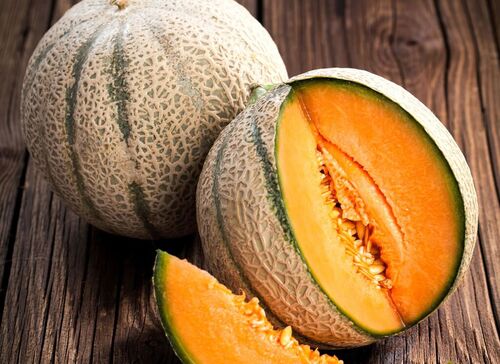Growing Melon

Sowing melons
To grow melons, it is important not to start sowing too early. This is because it is a plant that really likes the summer heat. That is why the first advice is to grow the seeds indoors and then plant them out in a polytunnel or in a greenhouse. Outdoors is of course also possible but only if the temperature allows it in your area. Because the plant grows quite quickly, it is best to use pots of 9x9cm.
Melon seeds varieties
In our webshop we have 4 types of melons.
- Organic melon Charentais
- Melon Charentais
- Melon Orange Pineapple
- Melon Piel de Sapo
Of course there are many other types of melon seeds such as the Outdoor Wonder F1, Arava F1, Rubens F1 etc.
Can you grow melons vertically?
You can leave them on the ground to spread out or let them climb a trellis. A lot of people who do not have the space or doing vertical gardening grow them on trellises or chainlink fences. Use a melon hammock to support the hanging fruit if desired, but it often isn’t necessary.
How long does it take to grow melon seed to harvest?
It usually takes about 75 to 90 days, depending of course on the temperature. It can go a little faster if there is a continuous period of warmth. This happens especially in the more southern European countries such as France, Spain and Italy. The ideal growing temperature is between 20°C and 26°C, with a night temperature not lower than 18°C.
How many melons will one plant produce?
A melon plant will produce between 4 and 7 fruits per season.
At what distance do you sow the melon plants?
Because the melon plant can become quite extensive, we recommend keeping a distance of at least 50 cm between the plants. Then they will have plenty of room to grow.
When do you start sowing melon seeds?
Sow two seeds 1.5cm (½in) deep from mid- to late April, in small pots, a propagator or on a sunny windowsill at 18-21ºC (64-70ºF). Remove the weakest seedling after germination.
If you're growing your melons outdoors, harden off (acclimatise to outdoor conditions) from late May to early June, once there is no danger of frost and when they have three or four leaves. Melons are tender plants, so they need a warm, sunny spot with high humidity. It is best to grow them in a glasshouse, polytunnel or under a cloche or in a coldframe.
Reduce chances for pests and disease
- Rotate where you plant melons and members of the cucumber family (Cucurbitaceae) such as squash or pumpkins.
- Once fruits have formed, raise them up off the ground with melon cradles or pots; this increases air circulation and helps with rot and insects.
- Grow melons vertically; they love to climb. Use a melon hammock to support the hanging fruit if desired, but it often isn’t necessary.
- Inspect leaf undersides daily for aphids and other pests.
Care for melons correctly throughout the growing season
- Mulch melons to help retain moisture, regulate temperature, control weeds, and keep fruit clean.
- Water in the morning and avoid getting water on leaves, which can encourage disease.
- Be on the lookout for bees. Male flowers will appear first, followed by female flowers. You can consider hand pollination when female flowers die.
- Just before or as soon as the vines begin to run, a second application of nitrogen is advisable. This is usually 30 to 60 days from planting.
- Place the melon plants close to the entrance of the greenhouse so that bees can easily reach the melon plants
- Also be careful with putting the plants directly in full sun, young melon plants do not like bright sunlight.
Hand-pollinating
Pollination is usually a natural process, but the plants can also be helped by doing this yourself. Before pollinating, it is important to ensure that both male and female flowers are in bloom. Male flowers can be identified by the small short anthers with pollen in the middle of the flower and the thin stem, devoid of bulging, leading up to the flower. In contrast, female flowers exhibit a roundish folded stigma in the center of the flower and a thicker immature shape which contains the unpollinated fruit. Once the presence of a male and female flower have been verified, then comes the pollinating itself. With melon flowers you can just pick the male flower, leaving as much stem as possible attached, and pull back the petals to expose the anthers. To pollinate, you insert the male flower into the female flower just enough so that I can feel that the male anthers just make contact with the female stigma.
Where to buy melon seeds?
We have 4 different types of melon seeds in our webshop, including 1 organic variant. Good luck growing melons!



